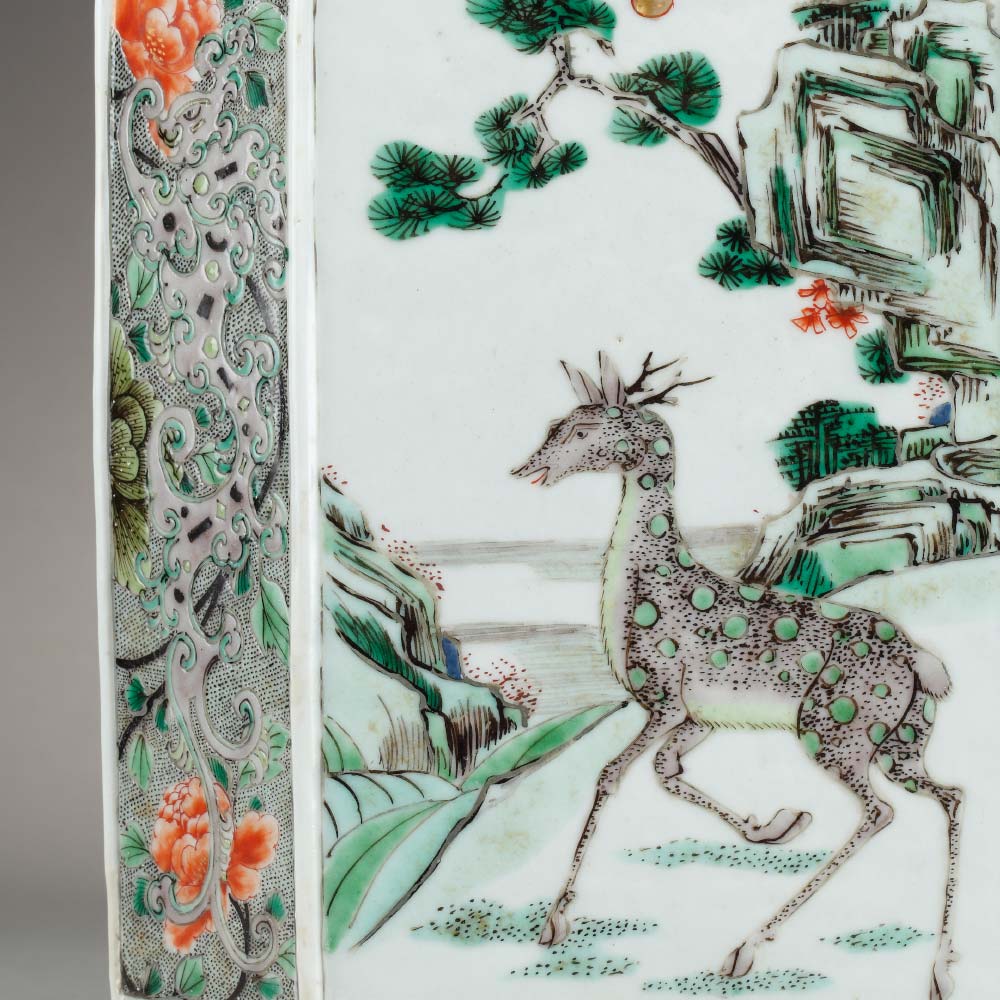A rare “albarello” apothecary jar in underglaze blue porcelain
- Porcelain and underglaze blue
Description
The jar, of tall cylindrical shape, with a slightly concave waist, resting on a small bevelled foot, the short neck slightly flared mouth. The glazed base with an artemisia leaf mark in underglazed blue.The albarello is painted with little animals and birds among flowers and leaves scrolls. Circling the waist of the vessel, a banner with the inscription « DIAPR.SOL ». Above this band, a winged angel’s head. The jar’s reverse repeats the cherub imagery.
The inscription « DIAPR .SOL » is the abbreviation for the Latin « Diaprunum solitivum », a purgative electuary made from damson plum.
The shape of albarello jar is based on Persian and Middle-Eastern designs. The first jars were brought to Italy by Hispano-Moresque traders during the 13th century. These jars were designed to hold apothecaries ointments and dry drugs. The cherub design was introduced on English drug jars in the 1660’s and remained popular until about 1700.
Bibliography
SARGENT William R.Treasures of Chinese export Ceramics from the Peabody Essex Museum, n°33, p. 118-119 (a similar jar)
Similar jars
British Museum, Londres (1963,0422.6)
Virginia Museum of Fine Arts, Richmond
Victoria & Albert Museum, Londres
Thornhill Collection, North Staffordshire Polytechnic, Stoke-on-Trend
Peabody Essex Museum, Salem (E83995)
A rare “albarello” apothecary jar in underglaze blue porcelain
- Porcelain and underglaze blue
Discover more Porcelain
Return to the collection


A famille verte porcelain bitong brushpot decorated with deers and birds among flowers


A famille verte « official scene » rouleau porcelain vase


A kraak porcelaine wine pot decorated with a Buddhist lion


A pair of small rouleau vases decorated with birds flying among flowers

















